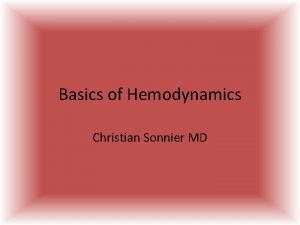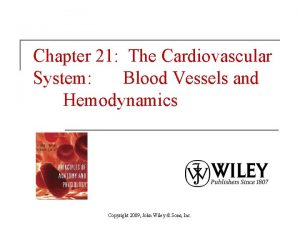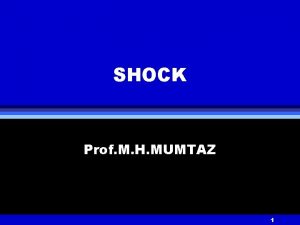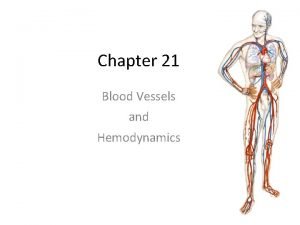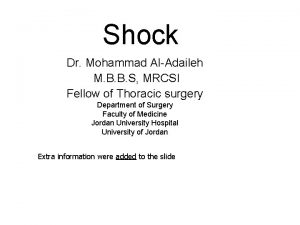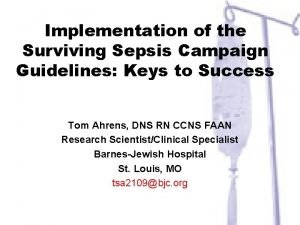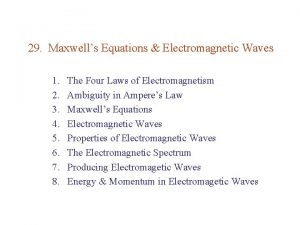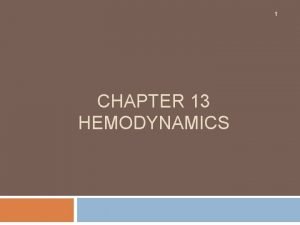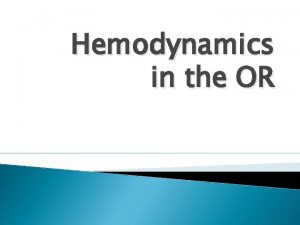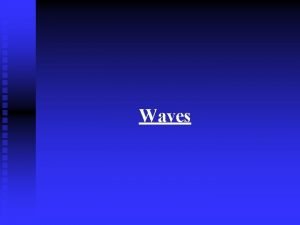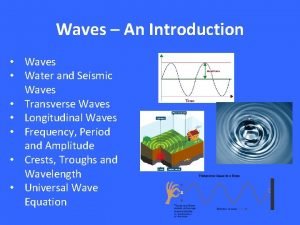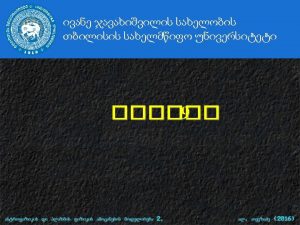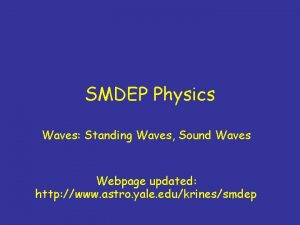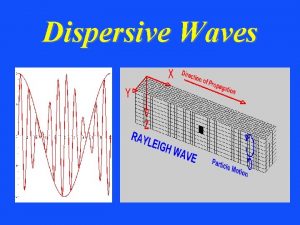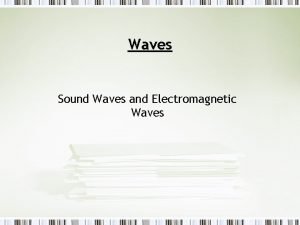Hemodynamics II When The Waves Dont Look Right









































- Slides: 41

Hemodynamics II … When The Waves Don’t Look Right … Chris Pan, MD. MBA. MS. Interventional Cardiology University of California, Irvine

Disclosures None

Content • Valvular heart disease o Aortic disease o Mimicker of aortic stenosis o Mitral disease • Pericardial disease o Constrictive vs Restrictive • Intracardiac shunt

LHC + RHC measurement • RHC: chamber pressure, cardiac output, valve area • LVEDP: Fluid status / HF • LV-Ao measurement: Aortic disease • LV-PCWP measurement: Mitral disease • LV-RV response: Pericardial disease • Saturations: intracardiac shunt

Case 1 70 M presented with shortness of breath • Diastolic murmur along sternal border • Visible strong carotid pulse • Head bobbing

Ren X , Banki N M Circulation 2012; 126: e 28 -e 29

Wide Pulse Pressure Aortic tracing Ren X , Banki N M Circulation 2012; 126: e 28 -e 29 LV tracing

Rapid Rise of LV Diastolic Pressure Aortic tracing Ren X , Banki N M Circulation 2012; 126: e 28 -e 29 LV tracing

Near Equalization of Diastolic LV and Ao Aortic tracing Ren X , Banki N M Circulation 2012; 126: e 28 -e 29 LV tracing

Aortic Regurgitation Key Hemodynamic Findings: • Wide pulse pressure: High systolic +Low diastolic AO • Rapid rise in LV diastolic pressure • LVEDP ~ AOEDP • LVEDP is much higher than PCWP (esp. in acute AR)

Case 2 70 M presented with shortness of breath Cath findings: • Normal coronary arteries • LVgram: EF ~ 30%

WWYD? 70 M with SOB, normal coronary arteries, depressed EF, and aortic stenosis with aortic gradient ~ 30 mm. Hg • Right heart catheterization • Re-cross aortic valve to measure gradient with a Langston dual lumen catheter • Determine the true severity of the aortic stenosis o Pseudo aortic stenosis (2/t low flow or gradient) vs o True fixed aortic stenosis

Ao. V Area Formula Gorlin Formula: Hakki Formula

Moderate or Severe AS? Valve Replacement? P-P gradient 30 mm. Hg CO = 3. 2 l/m Fick AVA = 0. 7 cm 2

Dobutamine Challenge True fixed stenosis Nishimura R A , Carabello B A Circulation 2012; 125: 2138 -2150 vs Pseudo variable stenos

Dobutamine Challenge Base 10 Dob+Pace 80 20 Dob + Pace 95

S/p Aortic valvuloplasty … What happened? AS AR

Case 3 70 M presented with shortness of breath Cath findings: • Normal coronary arteries • Normal ejection fraction

Aortic Stenosis?

Still Aortic Stenosis? Distal LV Sub-Aortic

Spike & Dome

Hypertrophic Cardiomyopathy Nishimura R A , Carabello B A Circulation 2012; 125: 2138 -2150

Brockenbrough-Braunwald-Morrow Sign AS 1. Decreased arterial pulse pressure 2. Increased systolic peak gradient HCM Nishimura R A , Carabello B A Circulation 2012; 125: 2138 -2150 3. Spike and Dome

Case 4 70 M evaluated for shortness of breath • Admitted for inferior STEMI s/p DES to mid RCA • Developed acute HF symptoms and new systolic murmur 24 hrs after PCI

Large V wave

Large V wave Definition: • Peak V wave > 40 mm. Hg • Peak V wave – PCWP > 10 mm. Hg • Peak V wave : PCWP > 2 Etiologies: • Sudden increase of LA pressure/volume o o Acute MR (from ruptured chordae): 3 x > normal Septal defects Hypervolemia Atrial infarction

Case 5 70 M evaluated for shortness of breath Cath findings: • Normal coronary arteries • Normal ejection fraction

Mitral Stenosis

Mitral Stenosis • Commonly measured by simultaneous LV and PCWP pressures • Often overestimate the true transmitral gradient o Delay in transmission of the change in pressure contour o Phase shift o Heart rate

Overestimate Mitral Stenosis Nishimura R A , Carabello B A Circulation 2012; 125: 2138 -2150

Overestimate Mitral Stenosis Rogers, J. “Hemodynamics in the Cath Lab: A Forgotten Art? ”

Case 6 70 M evaluated for shortness of breath • Lung cancer on chemo-radiation therapy • Recurrent pericardial effusion

Which Tracing Requires Pericardiocentesis? A. B. https: //thoracickey. com/5 -the-atrial-waveform/

B. Tampondade vs Constrictive Pericarditis http: //www. brown. edu/Courses/Bio_281 -cardio/handout 6 c. htm

Constrictive Restrictive LV RV


Case 7 Does he need ASD repair ? 70 M evaluated for shortness of breath • Known ASD • Saturations: SVC: 68% IVC: 63% RA: 65% RV: 87% PA: 87% FA: 100% PV: 100%

L R shunt: • ASD VSD PDA • RV failure R L shunt: • To. F Eisenmenger’s Transposition • Hypoxia

Shunt Calculation Qp Qs (Ao sat – Mv sat) (Pv sat – Pa sat) • Mv sat = (3 SVC + IVC) / 4 • Pulm vein sat = LV O 2 sat if shunt exists • Qp/Qs > 2 = severe shunt = repair • Qp/Qs < 1 = R L shunt = irreversible = no repair

Qp Qs (100% – 66. 75%*) (100% – 87%) 2. 56 * MV sat = (3 x 68% + 63%) / 4 = 66. 75% SVC: 68% IVC: 63% RA: 65% RV: 87% PA: 87% FA: 100% PV: 100%

Questions & Comments THANK YOU
 Look up to the left
Look up to the left Right product right place right time right price
Right product right place right time right price Right time right place right quantity right quality
Right time right place right quantity right quality Don't laugh at me allen shamblin
Don't laugh at me allen shamblin Dont ask dont tell political cartoon
Dont ask dont tell political cartoon Hemodynamics
Hemodynamics Chapter 21 hemodynamics
Chapter 21 hemodynamics Anaphylactic shock hemodynamics
Anaphylactic shock hemodynamics Collateral circulation vs anastomosis
Collateral circulation vs anastomosis Neurogenic shock symptoms
Neurogenic shock symptoms Sepsis hour 1 bundle
Sepsis hour 1 bundle The right man on the right place at the right time
The right man on the right place at the right time How does the leafy hornmouth avoid being crushed
How does the leafy hornmouth avoid being crushed Dont look up tick
Dont look up tick Example of mechanical wave
Example of mechanical wave Compare and contrast p waves and s waves using venn diagram
Compare and contrast p waves and s waves using venn diagram Is echolocation transverse or longitudinal
Is echolocation transverse or longitudinal Mechanical and electromagnetic waves similarities
Mechanical and electromagnetic waves similarities Examples of mechanical wave
Examples of mechanical wave Mechanical and electromagnetic waves
Mechanical and electromagnetic waves Long waves and short waves
Long waves and short waves Seismic waves
Seismic waves Difference between electromagnetic and mechanical waves
Difference between electromagnetic and mechanical waves Constructive waves and destructive waves difference
Constructive waves and destructive waves difference Difference between matter waves and electromagnetic waves
Difference between matter waves and electromagnetic waves Is a seismic wave mechanical or electromagnetic
Is a seismic wave mechanical or electromagnetic What type of waves are sound waves? *
What type of waves are sound waves? * Electromagnetic waves vs mechanical waves
Electromagnetic waves vs mechanical waves Longitudinal vs transverse wave
Longitudinal vs transverse wave Direction of electromagnetic waves
Direction of electromagnetic waves Look at activity 1 and answer
Look at activity 1 and answer Look at the picture in activity 1
Look at the picture in activity 1 1.look at the picture
1.look at the picture The statue that didn't look right
The statue that didn't look right Look at the picture and choose the correct sentences
Look at the picture and choose the correct sentences You put your right foot in you put your right foot out
You put your right foot in you put your right foot out Left left right right go go go
Left left right right go go go Turn around go go go
Turn around go go go ưu thế lai là gì
ưu thế lai là gì Sơ đồ cơ thể người
Sơ đồ cơ thể người Tư thế ngồi viết
Tư thế ngồi viết đặc điểm cơ thể của người tối cổ
đặc điểm cơ thể của người tối cổ





